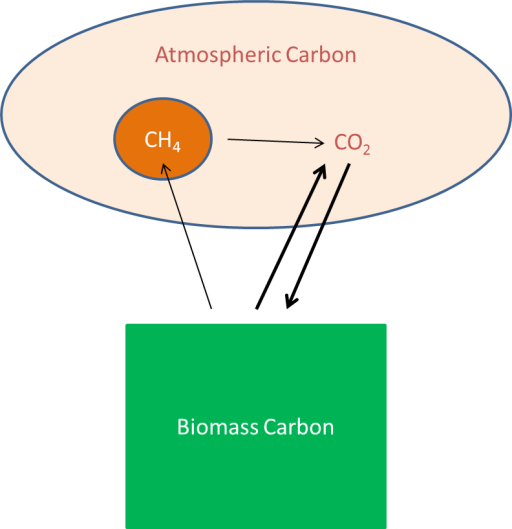Biomass is an important tool in meeting GHG emissions reductions
All renewables provide the greenhouse gas benefit of displacing fossil fuel use. Biomass energy also provides greenhouse-gas benefits by reducing the greenhouse-gas emissions associated with the recycling of the carbon in the biomass fuel (biogenic carbon). Because these two sources of greenhouse-gas reductions associated with biomass, displaced fossil fuel use, and reduced biogenic greenhouse-gas emissions are similar in magnitude, biomass produces approximately twice as much greenhouse gas benefit as other renewables, like wind or solar, which only displace fossil fuel.
The carbon in biomass fuels (biogenic carbon) is already part of the global carbon cycle, in which carbon circulates rapidly between the atmosphere and the biomass on earth, the great bulk of which is wood in the world’s forests. The figure below illustrates the most active part of the global carbon cycle.

Biomass energy production can affect biogenic atmospheric greenhouse-gas concentrations in two distinct ways. First, the total amount of carbon that is sequestered in terrestrial biomass affects the amount of carbon in the atmosphere. Energy production from forest fuels contributes to forest health and fire resiliency, thereby increasing the amount of carbon that is stored on a sustainable basis in the earth’s forests. Second, biomass energy production can change the timing and relative mix of carbon gases emitted into the atmosphere associated with the recycling of the biomass resources. As a greenhouse-gas, reduced carbon (CH4) is twenty-five times more potent than oxidized carbon (CO2) on an instantaneous, per-carbon basis. Therefore the form in which carbon is transferred from the biomass stock to the atmospheric stock is critically important from the standpoint of greenhouse forcing impact.